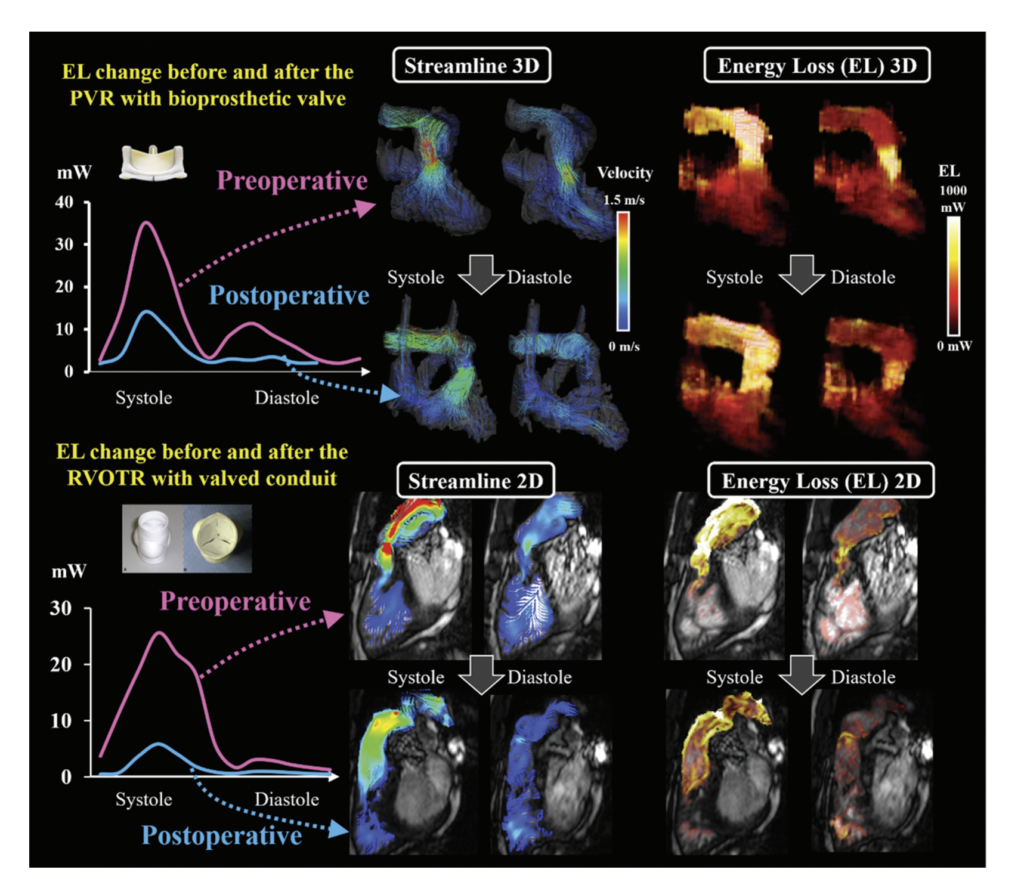Hemodynamic Parameters for Cardiovascular System in 4D Flow MRI: Mathematical Definition and Clinical Applications
Blood flow imaging becomes an emerging trend in cardiology with the recent progress in computer technology.
For evaluation of the hemodynamics, novel mathematically derived parameters obtained using measured velocity distributions are essential.
This paper examines theoretical definition and clinical applications of the aforementioned, obtained using measured velocity fields. These include traditional and typical parameters such as wall
shear stress (WSS) and its related parameters. As well as vorticity, energy loss, turbulent kinetic energy, enstrophy, and circulation indicating the rotating flow strength or power of 2D vortical flows.
The result that 4D flow MRI is a widely used tool in cardiology and has the enabled comprehensive assessment of the cardiac function and hemodynamics in a wide range of cardiovascular diseases, including congenital heart disease, aortic disease, and
heart valve diseases.
In addition to the visualization of the flow streamline, the introduction of parameters to estimate the vortex, helical spiral, and turbulent flow has added numerous advantages to the 4D flow MRI in the determination and evaluation of therapeutic strategies, considering the improvement of the long-term prognosis of cardiac function after surgical procedures.

Reference
Keiichi Itatani, Tetsuro Sekine, Masaaki Yamagishi, Yoshinobu Maeda, Norika Higashitani, Shohei Miyazaki, Junya Matsuda, Yasuo Takehara, "Hemodynamic Parameters for Cardiovascular System in 4D Flow MRI: Mathematical Definition and Clinical Applications", Magnetic Resonance in Medical Sciences, Published Online (2022) 10.2463/mrms.rev.2021-0097.
Go To the Journal Page
